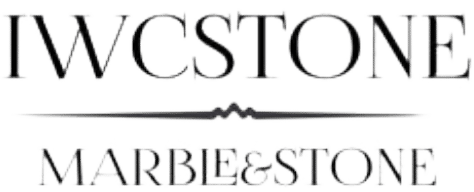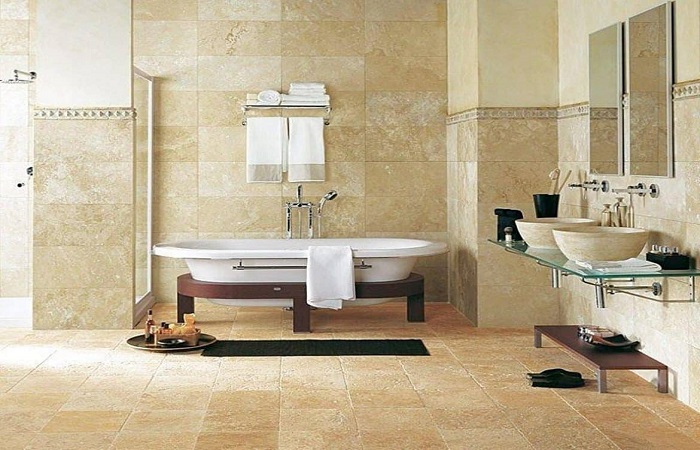
Travertine stone , a versatile natural stone, has been a popular choice in design and construction for centuries. Known for its elegance and durability, it has found its place in a wide range of architectural and decorative applications. Travertine uses span across both interior and exterior spaces, offering an ideal solution for homeowners and designers looking for a material that combines beauty with functionality. From flooring and countertops to outdoor patios and feature walls, the possibilities are endless.
But what is travertine used for exactly ? This question is crucial for anyone considering this stone for their next project. In this article, we will explore the many practical applications of travertine, shedding light on its role in transforming spaces with its timeless charm.
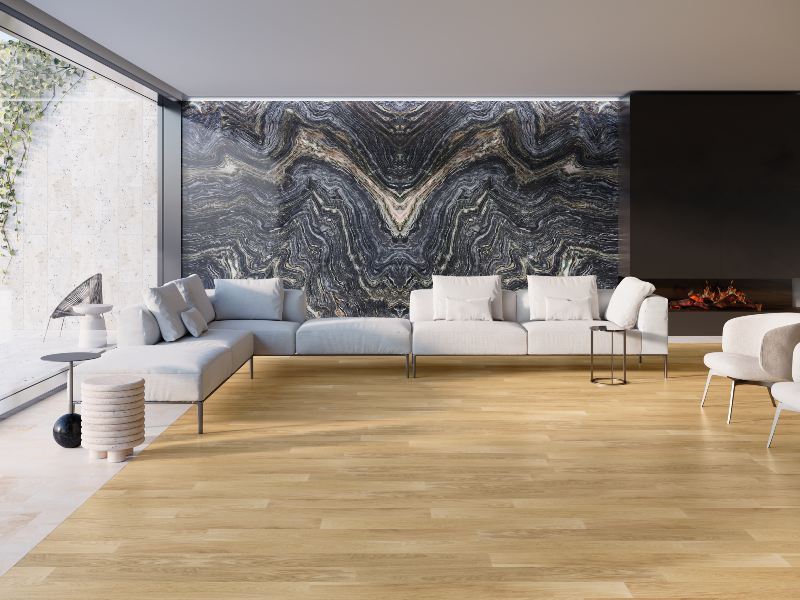
Travertine is formed when mineral-rich spring water evaporates, leaving behind calcium carbonate deposits. Over thousands of years, these deposits solidify into stone. As a result, travertine has a naturally porous texture, characterized by small holes and cavities formed due to trapped gas bubbles. These unique features, along with its range of colors, including light beige, honey, and even dark browns and blacks, make travertine a visually striking and highly functional stone.
Unlike other natural stones like marble or granite, travertine is a sedimentary rock, which gives it a slightly softer texture. While this means it’s easier to cut and shape, it also requires proper sealing and maintenance, especially for high-traffic areas or outdoor applications.
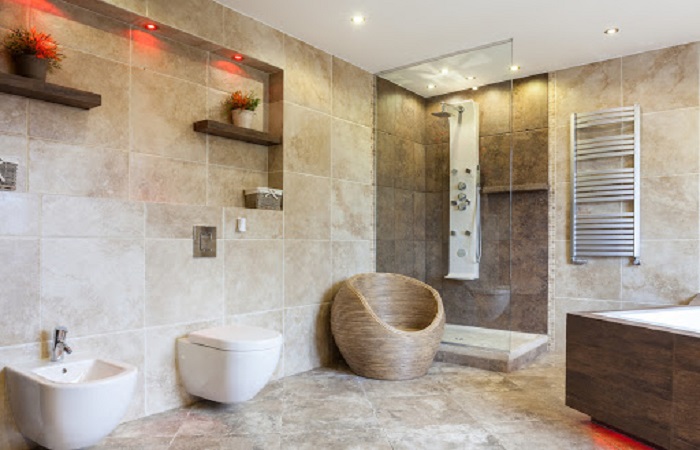
Travertine’s natural beauty and versatility allow it to be used in various ways, both indoors and outdoors. Let’s break down the primary areas where this material shines, with a more in-depth look at its application:
Travertine has long been a top choice for flooring in both residential and commercial spaces due to its luxurious look and durability. Its various finishes—honed, tumbled, and polished—allow for adaptability in different environments.
Interior Flooring: Travertine is widely used in kitchens, bathrooms, living rooms, and entryways. Its polished form is particularly popular for high-traffic areas like entry halls and kitchens, as it offers an elegant, sleek look. For bathrooms, a honed or tumbled finish is more appropriate as it offers a softer, matte look while providing better traction when wet.
Exterior Flooring: Travertine’s porosity gives it an advantage in outdoor applications. Whether for patios, garden paths, or driveways, its ability to withstand different weather conditions—such as freezing temperatures or excessive heat—makes it an excellent choice for exterior use. Tumbled travertine is preferred for walkways and poolside areas because of its slip-resistant properties.
Travertine can be used as a stunning material for both interior wall cladding and exterior facades. It provides a unique visual texture due to its pores and natural variations.
Interior Wall Cladding: Travertine enhances the appearance of living spaces. Large travertine panels or tiles used on accent walls can give a rustic or modern touch, depending on the finish. It’s commonly seen in lobby areas, corridors, and feature walls in homes and offices.
Exterior Facades: Travertine is also an excellent choice for building facades. It can be used in modern construction or renovations, where it not only provides an attractive finish but also protects the building from the elements. The porous nature of the stone ensures better thermal insulation compared to other materials, making it beneficial for regulating temperature within the structure.
Travertine is increasingly being used for kitchen countertops and backsplashes. Though not as hard as granite or quartz, when properly sealed, travertine is durable enough for countertop use.
Countertops: Travertine adds a timeless aesthetic, complementing both traditional and contemporary kitchen styles. The natural veining and tonal variations make each piece unique. However, it requires regular maintenance (sealing and cleaning) to preserve its look and prevent staining.
Backsplashes: A travertine backsplash, whether polished or tumbled, provides an elegant contrast against the rest of the kitchen, particularly when paired with light cabinetry and stainless steel appliances. The natural colors and textures of travertine complement various types of kitchen design, from rustic farmhouse to sleek, modern kitchens.
The durability and water-resistance of travertine make it an ideal option for shower walls and stalls. Many people use travertine tiles to cover shower walls, creating a spa-like atmosphere.
Shower Walls: Travertine’s natural finish, whether polished or honed, enhances the luxurious feel of a bathroom. The stone’s resistance to water, combined with its aesthetic appeal, makes it a popular choice. However, as with other stone tiles, proper sealing is essential to protect the surface from moisture and soap scum buildup.
Shower Floors: Travertine is also used in shower floors, particularly tumbled travertine, which has a slightly rough texture, providing more grip when wet. The stone’s natural warmth makes it comfortable underfoot, especially when heated flooring is installed underneath.
One of the most prominent uses of travertine is in creating luxurious fireplace surrounds and mantels. Its timeless, classic appearance fits both traditional and contemporary designs.
Fireplace Surrounds: Travertine is heat-resistant, making it ideal for areas around a fireplace. Its neutral tones blend with a variety of decor, and the unique texture adds a sophisticated, rustic appeal to any space.
Mantels: Travertine can be used to craft elegant fireplace mantels. Whether you prefer a minimalist design or a more ornate, classical approach, travertine complements the ambiance and adds a touch of class to the room.
Travertine can be used for both stair treads (the part of the step you walk on) and risers (the vertical portion between steps), either indoors or outdoors. It adds a sense of elegance to staircases while ensuring safety due to its slip-resistant surface.
Interior Stairs: For interior staircases, polished or honed travertine can give your home a sleek, elegant look, especially when paired with a glass railing or ornate wooden accents.
Outdoor Stairs: When used outdoors, travertine staircases provide a natural feel to gardens or terraces. Its ability to endure outdoor elements while maintaining its aesthetic makes it a standout choice for exterior stairs.
Travertine’s versatility extends to landscaping and hardscaping applications, especially in areas where you need a material that is both durable and visually appealing.
Garden Paving: Travertine can be used for garden paths, walkways, or even retaining walls. The stone is an excellent choice for these areas due to its ability to withstand moisture and its natural resistance to temperature extremes.
Garden Accents: It can also be used for decorative garden features like water fountains, planter boxes, or even stone sculptures. Its natural colors blend well with the outdoor environment, creating a seamless look in garden landscapes.
Travertine’s ability to remain cool underfoot even in hot climates makes it an excellent material for pool coping and the areas around the pool, especially in sunny regions.
Pool Coping: Travertine’s slip-resistant texture and ability to withstand the harsh effects of chlorine make it ideal for pool coping—the material around the edge of the pool. It’s also available in various colors and finishes to match the pool’s design.
Pool Decking: For pool decks, travertine provides an elegant surface that is cool to the touch even in high temperatures. Its natural texture gives the pool area a luxurious look while being functional, ensuring it’s safe to walk on even when wet.
Travertine is often used for driveways and entryways due to its durability and beauty. Its unique texture and warm hues make a strong first impression and elevate the curb appeal of any home.
Driveways: Travertine pavers used in driveways not only increase the aesthetic value of the property but are also durable enough to support heavy vehicle traffic. Its natural look enhances the landscaping around the driveway, blending seamlessly with gardens and surrounding elements.
Entryways: In entryways, travertine provides a grand, welcoming effect. Its natural texture and rich tones make it perfect for creating a statement area when someone enters your home.
The range of finishes, textures, and colors available in travertine makes it an incredibly adaptable material for nearly any use. Whether you want a luxurious, polished appearance or a more rustic, weathered texture, travertine can meet your aesthetic and practical needs.
The stone’s natural origins, combined with its ability to withstand the elements, make it an enduring option for both indoor and outdoor applications. It’s also highly sustainable compared to other materials, as it requires minimal processing and has a long lifespan. This makes it not only a cost-effective choice in the long run but also a responsible option for those looking to use eco-friendly materials.
Travertine’s many uses and advantages make it an ideal material for both practical and decorative purposes. Its versatility allows it to be employed in various applications, from floors and walls to outdoor paving and furnishings. The stone’s natural beauty, combined with its durability and timeless appeal, makes it a go-to material for architects, builders, and designers worldwide.
In addition, travertine offers a level of sustainability that appeals to environmentally conscious consumers. As a natural stone, it’s a resource that can be sourced sustainably, and its longevity ensures that it remains a valuable part of your home or building for years to come.
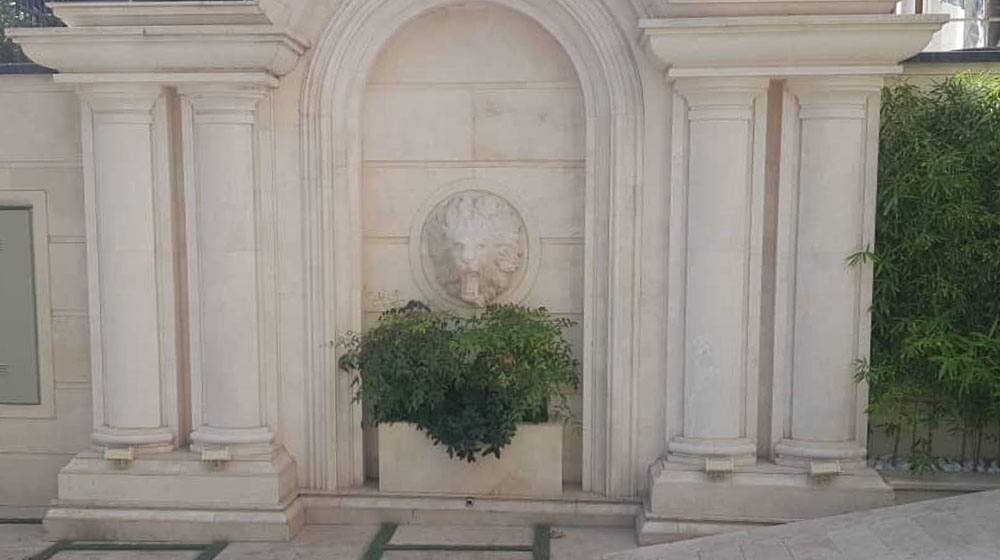
At IWC Stone, we specialize in providing a wide range of high-quality natural stones, including travertine, for both residential and commercial applications. Whether you are designing an elegant living space, creating a stunning outdoor area, or working on a large-scale construction project, we offer the finest selection of stones tailored to your specific needs.
Our team at IWC Stone understands that the right material can make all the difference in your project’s success. That’s why we are committed to delivering not only top-tier products but also expert guidance in selecting the perfect stone for your needs. Whether you’re looking for travertine tiles, pavers, slabs, or custom stone pieces, we provide versatile, durable, and aesthetically pleasing options that can elevate any design.
As you conclude your research on natural stone, we invite you to explore our wide selection of high-quality travertine and marble options. Whether you’re designing a modern space or looking for something more classic, IWC Stone has the perfect stone for your project. From the warm tones of Cream Travertine to the bold sophistication of Black Travertine, each stone has been carefully selected for its unique beauty and durability.
For those seeking a timeless appearance, White Travertine offers a refined look that never goes out of style, while Silver Ice Travertine provides a contemporary, cool finish perfect for modern designs. If you’re after something with a subtle smoky effect, the Silver Travertine could be just what you’re looking for. Finally, the soft, neutral tones of Beige Travertine bring warmth and elegance to any space.
At IWC Stone, we strive to offer exceptional quality and customer satisfaction, helping you find the perfect natural stone for your next renovation, construction, or design project.
High quality in processing
The best prices
Shipping nationwide
24 hour support
It is our mission to produce and provide building stone with the best quality and competitive price in the country.
